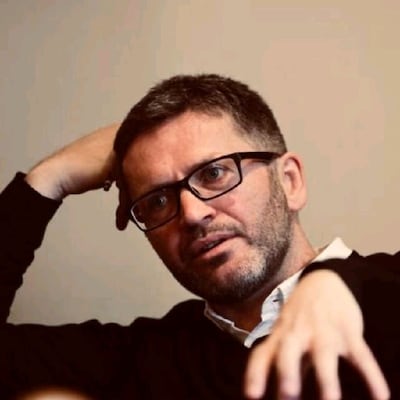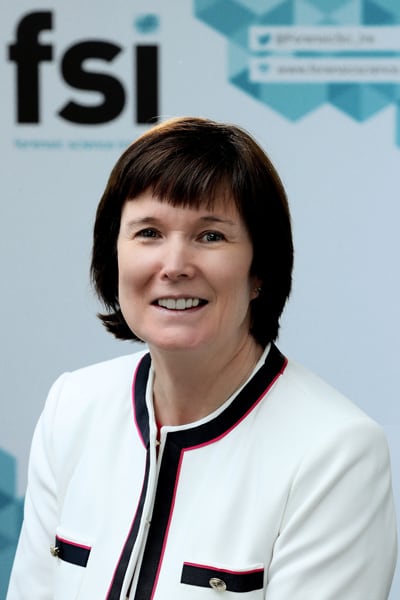The investigation into the mother-and-baby home in Tuam, Co Galway, is to include DNA profiling using genetic material that only comes down the maternal line.
The investigation, which is being overseen by Daniel McSweeney, the director of Authorised Intervention, includes, where possible, identifying the bodies buried in the grounds in Tuam by comparing genetic material from the remains with reference material from people believed to be related to them.

Forensic Science Ireland (FSI), the State laboratory that carries out examinations of DNA material, is working on the investigation and its research tools will include the examination of mitochondrial DNA (mDNA).
Although it is commonly believed that humans have only the DNA contained in the cell’s nucleus (the genome), they in fact have two distinct sets of DNA - the material in the nucleus that is central to the person’s growth, development and many of their characteristics, and also a much smaller, separate piece of genetic material inside the mitochondria, the units within each cell that play a key role in energy production. While a person’s genome includes material that comes from both the sperm and the egg, the much smaller amount of genetic material that is inside each cell’s mitochondria comes only from the egg.
RM Block
“Mitochondrial DNA analysis uses DNA from tiny energy factories found inside all human cells called mitochondria,” says Dr Geraldine O’Donnell, director of genetics with FSI. Mitochondrial DNA can be more “abundant” and useful in cases where biological material is limited, such as cases where cells have been damaged by environmental exposure, to elements such as heat, light or water, which break up the DNA strand.

“Mitochondrial DNA is inherited by a child from its mother, so all relatives on the maternal line of the family will share the same mitochondrial DNA. This inheritance pattern together with it providing useful evidence from decomposed human remains makes mitochondrial DNA profiling important in the mothers-and-babies-home identification programme.”
The State laboratory will be using “next-generation sequencing technology” when examining mDNA material, in what is a new departure in its range of tools. It will also be using a DNA sequencing-based technique that involves the detection of tiny variations in DNA strands called single nucleotide polymorphisms, which may also have advantages in the circumstances of the Tuam case.
The existence of separate DNA material inside the mitochondria has its roots in an evolutionary event approximately two billion years ago that led to the complex (eukaryotic) cells found in all animals, plants, fungi and even some single-celled animals, but not in bacteria.
Bacteria, unlike eukaryotic cells, do not have a nucleus inside a membrane and other organelles outside the nucleus. Scientists believe that mitochondria are the evolutionary descendants of bacteria that infected or were engulfed by single-celled organisms approximately two billion years ago in an event that had enormous consequences for life on earth.
“Everything in your cell is important, but [mitochondria] are vital, they create energy,” says Prof Dan Bradley, a professor of genetics with Trinity College Dublin, whose work includes analysing DNA material from archeological remains to map the origins of the changing Irish population over the thousands of years the island has been inhabited.
“In deep evolution, originally, you had a cell, and the mitochondria was a type of bacteria that was engulfed into the cell with its own chromosome and then that went forward in time, so eukaryotic cells, more complex cells like ours, they have the remnants of other cells that were engulfed and that became the mitochondria. So, it is a cell within a cell. Originally it was a bacterium, but it is not a bacterium now. It evolved from the engulfing of a bacterium.”
Over time the engulfed bacterium lost elements of its chromosome, with the bits that were no longer useful degrading, or migrating to the DNA of the main cell, he says. “So, the mitochondrial element is greatly reduced, and mainly concerned with energy metabolism.”
Everything in evolution that is still there is there because it worked well, he says, and the “stuff that didn’t work isn’t there any more”. But the engulfing of the bacterium that became the mitochondria found in all complex cells was a “big stepping stone in the evolution of complex life, no question, absolutely.”
The ability to examine DNA material from different sources and find evidence of family links between different DNA samples is something that used to take a lot of time and serious money but can now be done in afternoons rather than years, and for few hundred euro. So-called next-generation sequencing is advancing all the time, driven by biomedical science. The system, explains Bradley, works by looking at a genome, which is made up of base pairs, and looking for “snips”, or locations on the code where you will find one of two possible codes, or letters.

“A genome is like a vast book and in that book, in the sentences, there are letters that differ. You have your own unique set of sentences. We don’t differ that much, but we differ at these points in the genome. One in every thousand letters is different, but that is a lot of information. There are three billion base pairs, three billion letters, so there is a lot of diversity.”
Because half of the genome comes from the mother, and half from the father, comparing samples can connect cousins who are linked by way of the mother or the father. This is not the case with mDNA. “That little bit you get only from your mother, which means that all people who are maternally related, like siblings, all have the same [mDNA], and if your mother’s sister has children, you will have the same [mDNA] as them also. So, it is a particular relationship, and it is good at finding that.”
Because the mDNA comes down the maternal line, it “couldn’t link you to your father, for example, or your father’s father, or his brother, so it has its limits. It is good for maternal relationships. But the whole genome can locate all relationships, up to a certain point of distance, something like fourth or fifth cousins.”
- Sign up for push alerts and have the best news, analysis and comment delivered directly to your phone
- Find The Irish Times on WhatsApp and stay up to date
- Listen to our Inside Politics podcast for the best political chat and analysis



















